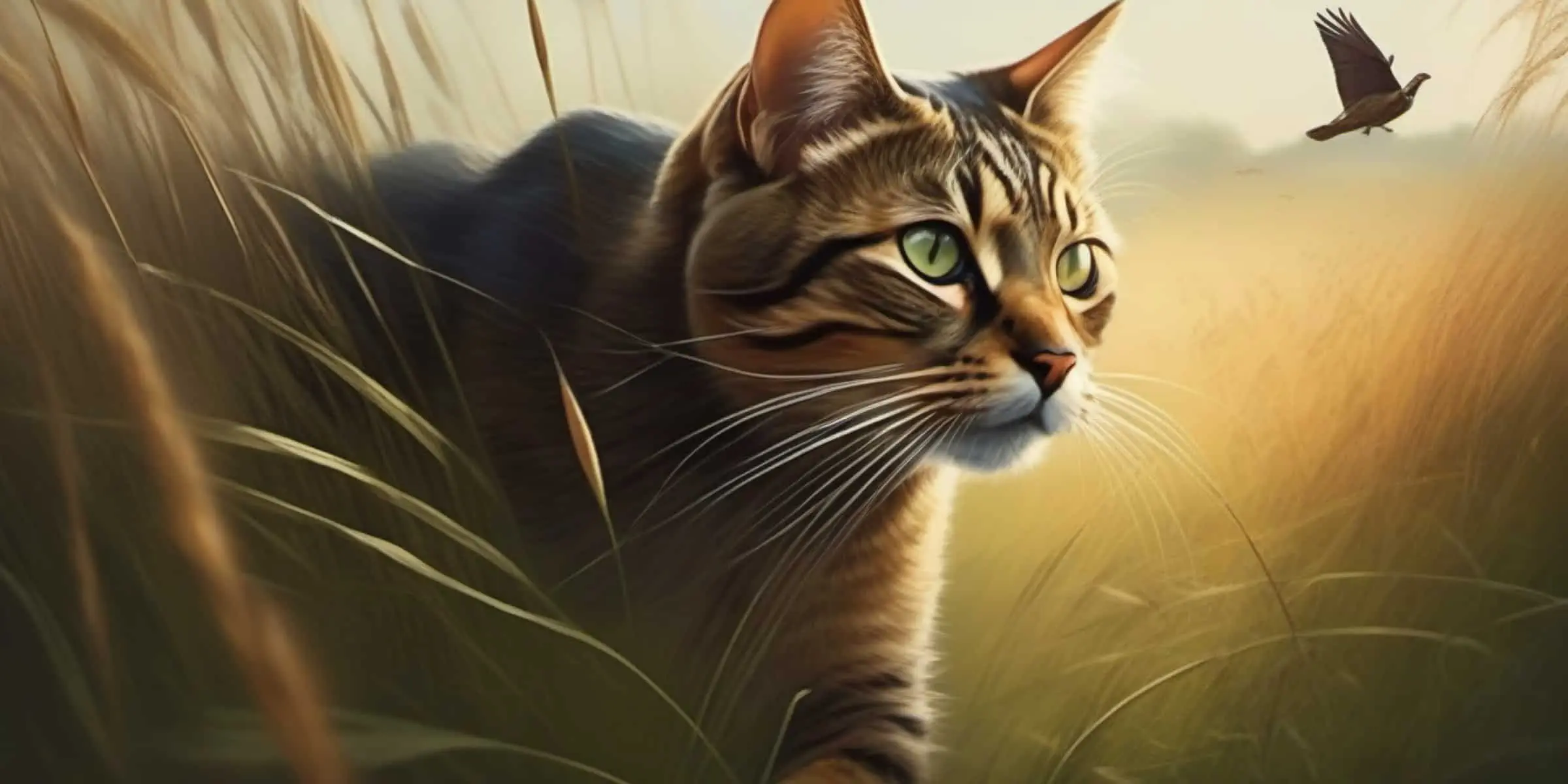The Best Fluffy Pancakes recipe you will fall in love with. Full of tips and tricks to help you make the best pancakes.

Do you ever wonder what animals your furry feline friend hunts?
Cats are natural predators and will prey on a variety of animals, including small mammals such as mice, rats, and rabbits. They may also hunt birds, insects, and reptiles. However, domesticated cats that are well-fed and kept indoors are less likely to hunt and prey on other animals.
Cats are skilled predators, targeting a variety of creatures for their meals. From small insects and birds to rodents and fish, cats have a diverse diet. They also prey on reptiles, amphibians, and small mammals.
In this article, we will explore the fascinating world of a cat’s hunting instincts and the animals they seek out. Get ready to delve into the captivating world of your cat’s hunting prowess.
Small Insects
You can easily spot a few small insects crawling on the ground. Cats have a natural instinct to prey on these tiny creatures due to their hunting techniques and preying behavior.
When hunting insects, cats rely on their keen eyesight and quick reflexes. They patiently observe their target, carefully calculating the distance and trajectory of their pounce. Once they’re within striking range, they utilize their sharp claws to snatch the insect from the ground.
Cats are also known for their ability to stalk their prey, creeping up stealthily until the perfect moment to strike. Their agile bodies and strong muscles allow them to swiftly capture and immobilize their small insect prey.
Birds
Birds are a common prey for cats, which can have a significant impact on bird populations. Cats are skilled hunters, often prowling and stalking their feathered targets.
To prevent conflicts between cats and birds, it’s crucial to implement measures such as keeping cats indoors or using deterrents to protect vulnerable bird species.
Impact on Bird Populations
Don’t underestimate the impact cats have on bird populations.
Cats, both domestic and feral, are skilled hunters and have a significant impact on bird populations. Their predatory behavior can have far-reaching consequences for ecosystems and conservation efforts.
Cats are responsible for the deaths of millions of birds each year, posing a threat to the diversity and stability of bird populations. Their natural instincts drive them to hunt, often targeting vulnerable bird species.
This hunting behavior disrupts the delicate balance of ecosystems, affecting not only bird populations but also other species that rely on birds for food or as part of their natural habitat.
To mitigate this impact, it’s crucial to promote responsible pet ownership, implement effective management strategies for feral cat populations, and support conservation efforts that aim to protect vulnerable bird species.
Preventing Cat-Bird Conflicts
Keep cats indoors to prevent conflicts between cats and birds. Bird conservation and outdoor cat management are important topics to consider when discussing this issue.
By keeping cats indoors, you can help protect bird populations and promote a healthier ecosystem. Here are some reasons why:
- Cats are natural predators and have the instinct to hunt small animals, including birds.
- When allowed to roam outdoors, cats can pose a significant threat to bird populations, especially vulnerable species.
- Studies have shown that outdoor cats are responsible for a large number of bird deaths each year.
By keeping cats indoors, you can reduce the risk of cat-bird conflicts.
- Indoor cats are less likely to have the opportunity to catch birds, thus minimizing the negative impact on bird populations.
- Providing environmental enrichment and interactive playtime for indoor cats can help satisfy their natural hunting instincts.
Overall, responsible cat ownership and keeping cats indoors play a crucial role in bird conservation and outdoor cat management.
Rodents
Rodents, such as mice and rats, are common prey for cats. They play a crucial role in the diet of feline predators, providing a source of sustenance and exercise.
The abundance or scarcity of rodents can significantly impact their populations in various ecosystems.
Impact on Rodent Populations
Cats are natural predators and their hunting instinct helps control rodent populations, which can have a direct impact on agriculture. Rodents are known to cause damage to crops, leading to substantial economic losses for farmers.
By preying on rodents, cats can help reduce the number of pests in agricultural areas, thus minimizing the need for chemical pesticides. However, it’s important to note that this natural behavior of cats can also lead to human-cat conflicts. Some people may consider cats a nuisance when they prey on birds or small mammals that are part of the local wildlife.
Striking a balance between the benefits of cat predation on rodents and addressing human concerns is crucial for sustainable pest management strategies.
Are Cats’ Hunting Instincts Linked to Their Unique Physical Attributes?
Cats’ hunting instincts are closely linked to their unique physical attributes. Their sharp claws, agile bodies, and keen senses allow them to stealthily approach prey and pounce with precision. This is what cats have humans fascinated by their innate hunting abilities that have been honed over centuries.
FInal Thoughts
In conclusion, cats are highly skilled predators with a diverse diet. They prey on a wide range of animals, including small insects, birds, rodents, fish, reptiles, amphibians, and small mammals.
An interesting statistic to engage the audience is that cats are estimated to kill billions of birds each year, posing a significant threat to bird populations worldwide.
Their hunting abilities and impact on local ecosystems make them fascinating subjects for scientific study.








